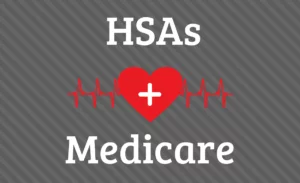Medicare and Medicaid Understanding the Differences and Similarities

Medicare and Medicaid are two commonly discussed healthcare programs, whether in the news or in conversations with family and friends. These programs play a vital role in providing healthcare coverage to millions of Americans. However, due to their similar names, many people mistakenly assume they are interchangeable or nearly identical.
In reality, while both Medicare and Medicaid are government-run programs designed to help individuals access healthcare services, they serve different populations and have distinct eligibility requirements and benefits. Understanding these differences is crucial, as it can directly impact your healthcare options and coverage.
In this blog, we’ll explore the key differences and similarities between Medicare and Medicaid, helping you make informed decisions about your healthcare needs.
What Is Medicare and How Does It Work?
Medicare is a federal health insurance program that provides coverage for a broad range of healthcare services. It is primarily designed for three main groups:
- People aged 65 and older – Medicare ensures that individuals entering their senior years have access to essential healthcare services.
- Younger individuals with disabilities – Those under 65 with qualifying disabilities can receive Medicare coverage to help manage their medical needs.
- People with End-Stage Renal Disease (ESRD) – Medicare covers individuals with permanent kidney failure who require dialysis or a kidney transplant.
As a federally funded program, Medicare plays a vital role in reducing healthcare costs for millions of Americans. By covering essential medical services, it helps eligible individuals access necessary treatments while alleviating financial burdens associated with healthcare expenses.
Understanding the Parts of Medicare
Medicare is divided into different parts, each designed to cover specific healthcare services. Together, these parts provide comprehensive coverage, ensuring beneficiaries receive the care they need.
Medicare Part A (Hospital Insurance)
Medicare Part A covers:
- Inpatient hospital stays
- Skilled nursing facility care (following a qualifying hospital stay)
- Hospice care
- Some home healthcare services
This coverage helps support individuals during hospitalizations and post-hospitalization care.
Medicare Part B (Medical Insurance)
Medicare Part B covers:
- Doctor visits and outpatient care
- Medical supplies and durable medical equipment (DME)
- Preventive services, such as screenings and vaccinations
With Part B, beneficiaries can access essential medical services outside of a hospital setting.
Medicare Part C (Medicare Advantage Plans)
Medicare Advantage (Part C) plans are offered by private insurance companies approved by Medicare. These plans include all Part A and Part B benefits and often provide additional coverage, such as:
- Prescription drug coverage (Part D)
- Dental, vision, and hearing benefits
- Wellness programs and fitness benefits
Medicare Advantage plans serve as an alternative to Original Medicare, offering expanded benefits under a single plan.
Medicare Part D (Prescription Drug Coverage)
Medicare Part D helps reduce out-of-pocket costs for prescription medications. Coverage includes:
- A wide range of prescription drugs
- Recommended vaccines
- Other preventive medications
Part D ensures beneficiaries have access to affordable medications needed to manage chronic conditions and maintain overall health.
Navigating Medicare Enrollment: When and How to Apply
Medicare enrollment is time-sensitive, and knowing when to apply ensures you receive the coverage you need without delays or penalties. Here’s a breakdown of the key enrollment periods:
- Initial Enrollment Period (IEP) – This seven-month window starts three months before your 65th birthday, includes your birthday month, and extends three months after. If you qualify for Medicare due to a disability, your enrollment may begin after receiving disability benefits for 24 months. Coverage typically starts the month after you enroll.
- Annual Open Enrollment Period (OEP) – Runs from October 15 to December 7 each year. During this period, you can change your Medicare Advantage (Part C) or Prescription Drug (Part D) plans, with new coverage taking effect on January 1.
- Medicare Advantage Open Enrollment Period (MA OEP) – From January 1 to March 31, individuals already enrolled in a Medicare Advantage (Part C) plan can switch to a different Medicare Advantage plan or return to Original Medicare (Parts A & B) with or without a Part D prescription drug plan.
Understanding these enrollment periods ensures you secure the right healthcare coverage and avoid potential gaps or penalties. Stay informed and take advantage of these opportunities to review and adjust your Medicare plan to fit your healthcare needs.
What Is Medicaid and How Does It Work?
Medicaid is a state-administered health coverage program that provides insurance to eligible individuals and families who meet specific income and other criteria. While Medicaid operates under federal guidelines, each state designs its program to meet the unique needs of its residents. Funding is shared between the federal government and state governments, allowing flexibility in coverage and eligibility requirements.
Who Is Eligible for Medicaid?
Medicaid eligibility varies by state and is based on factors such as income, family size, age, and disability status. Generally, Medicaid provides coverage for:
- Low-Income Adults and Children – Medicaid ensures low-income individuals and families have access to essential healthcare. In states that have expanded Medicaid, eligibility is typically set at 138% of the federal poverty level (FPL).
- Pregnant Women – Medicaid offers prenatal, labor and delivery, and postpartum care, ensuring comprehensive maternal health coverage for qualifying pregnant women.
- Elderly Adults – Medicaid supports low-income seniors who meet income and asset requirements, providing coverage for healthcare services, long-term care, and nursing home care.
- People with Disabilities – Medicaid covers individuals with physical disabilities, developmental disabilities, and mental health conditions, ensuring access to necessary medical treatments and support services.
Because Medicaid eligibility and benefits vary by state, it’s important to check with your state’s Medicaid office to understand specific qualifications and coverage options.
What Does Medicaid Cover?
Medicaid provides comprehensive healthcare coverage, with some benefits mandated by federal guidelines and others determined at the state level.
Core Benefits Required by Federal Law
The following services are covered in every state under Medicaid’s mandatory benefits:
- Hospital stays (inpatient and outpatient services)
- Laboratory and X-ray services
- Doctor visits
- Family planning services
- Nursing facility care (for qualifying individuals)
- Home health services
- Transportation to medical appointments
Optional Benefits Provided by States
In addition to the federally required benefits, each state may offer additional services, including:
- Prescription drug coverage
- Physical therapy
- Occupational therapy
- Speech and language therapy
- Respiratory care services
- Optometry services (vision care)
- Dental services
Because Medicaid benefits vary by state, it’s important to check with your state’s Medicaid office to understand the specific coverage available in your area.
Differences Between Medicare and Medicaid
Now that you have a clear understanding of Medicare and Medicaid, let’s examine the key differences between these two government healthcare programs. While both provide health coverage to U.S. citizens and permanent residents, they serve different populations, have distinct eligibility requirements, and vary in coverage, costs, and funding.
1. Eligibility
- Medicare primarily serves individuals aged 65 and older or those under 65 with qualifying disabilities or End-Stage Renal Disease (ESRD).
- Medicaid is designed for low-income individuals and families, including pregnant women, children, elderly adults, and people with disabilities.
2. Coverage
- Medicare includes:
- Part A – Hospital services
- Part B – Medical services
- Part D – Prescription drug coverage
- Additional options include Part C (Medicare Advantage) and Medicare Supplement (Medigap) plans to help cover gaps in Original Medicare.
- Medicaid offers comprehensive coverage, including:
- Hospital care, doctor visits, prescription drugs, and preventive care
- Depending on the state, Medicaid may also cover vision, dental care for adults, and additional long-term care services.
3. Variations in Coverage
- Medicare coverage depends on which plans a beneficiary chooses. For example, someone may have Original Medicare (Parts A & B) with a Part D plan, or they may opt for a Medicare Advantage (Part C) plan with additional benefits.
- Medicaid benefits vary by state, as states have flexibility in offering additional services beyond federally mandated benefits. This means coverage options can differ depending on where an individual lives.
4. Cost
- Medicare costs depend on the chosen plan and can include:
- Premiums, deductibles, coinsurance, and copayments
- Costs vary based on income, plan selection, and healthcare usage.
- Medicaid is based on income level, and most enrollees have little to no out-of-pocket costs. The program is designed to make healthcare accessible without financial hardship.
5. Funding
- Medicare is funded primarily by the federal government through:
- Payroll taxes
- Premiums paid by beneficiaries
- General tax revenues
- Medicaid is jointly funded by the federal and state governments. The federal government contributes a significant portion, while states provide their share to help administer and tailor Medicaid programs to their residents’ needs.
While both Medicare and Medicaid provide crucial healthcare coverage, they cater to different populations and operate under distinct structures. Understanding these differences can help individuals determine their eligibility, choose the right healthcare options, and maximize their benefits.
Can You Have Both Medicare and Medicaid?
Now that we’ve explored the differences between Medicare and Medicaid, a common question arises: Can you be enrolled in both programs? The answer is yes. Individuals who qualify for both Medicare and Medicaid are known as “dual-eligible beneficiaries.”
What Is Dual Eligibility?
Dual eligibility occurs when an individual qualifies for Medicare based on age (65 or older) or disability while also meeting the income and asset criteria for Medicaid. Being dual-eligible expands access to healthcare services, as Medicare and Medicaid work together to provide comprehensive coverage.
- Medicare covers hospital stays (Part A), doctor visits (Part B), and prescription drugs (Part D).
- Medicaid provides additional support, including long-term care services, dental care, and other benefits not covered by Medicare alone.
How Medicare and Medicaid Work Together
For dual-eligible individuals, Medicare typically pays first, covering eligible services. Medicaid then steps in to cover remaining costs, such as deductibles, copayments, and coinsurance, depending on the level of Medicaid eligibility.
Programs That Help Cover Medicare Costs for Dual-Eligible Individuals
Several Medicaid programs assist with Medicare-related costs, including:
- Qualified Medicare Beneficiary (QMB) Program – Helps pay for Medicare Part A and Part B premiums, deductibles, and coinsurance.
- Specified Low-Income Medicare Beneficiary (SLMB) Program – Assists with Medicare Part B premiums for individuals with slightly higher incomes.
- Qualified Disabled and Working Individual (QDWI) Program – Helps cover Medicare Part A premiums for certain disabled individuals who have returned to work.
Key Benefits of Dual Eligibility
✅ Reduced Out-of-Pocket Costs – Medicaid may cover Medicare premiums, deductibles, and copayments, lowering healthcare expenses.
✅ Expanded Coverage – Dual-eligible individuals receive additional benefits, such as long-term care, dental, vision, and transportation services.
✅ Access to More Providers – Dual eligibility allows individuals to use Medicare and Medicaid providers, increasing healthcare options.
For individuals who qualify, dual eligibility offers a significant financial and healthcare advantage, ensuring comprehensive coverage and reducing out-of-pocket expenses.
Discover Your Eligibility and Secure Your Health Coverage Today
Not sure if you qualify for Medicare, Medicaid, or both? Take charge of your health today by scheduling a free consultation with Plan Medicare’s dedicated advisors. We’ll help you:
✅ Determine your eligibility for Medicare and/or Medicaid
✅ Navigate the enrollment process with expert guidance
✅ Find the right healthcare coverage for your needs
Whether you’re turning 65, have a qualifying disability, or need assistance with low-income healthcare coverage, our team is here to provide the support you need.
📞 Call us now at [516-900-7877]
💻 Book your appointment online for a free personalized consultation
Secure your healthcare coverage today with Plan Medicare!






